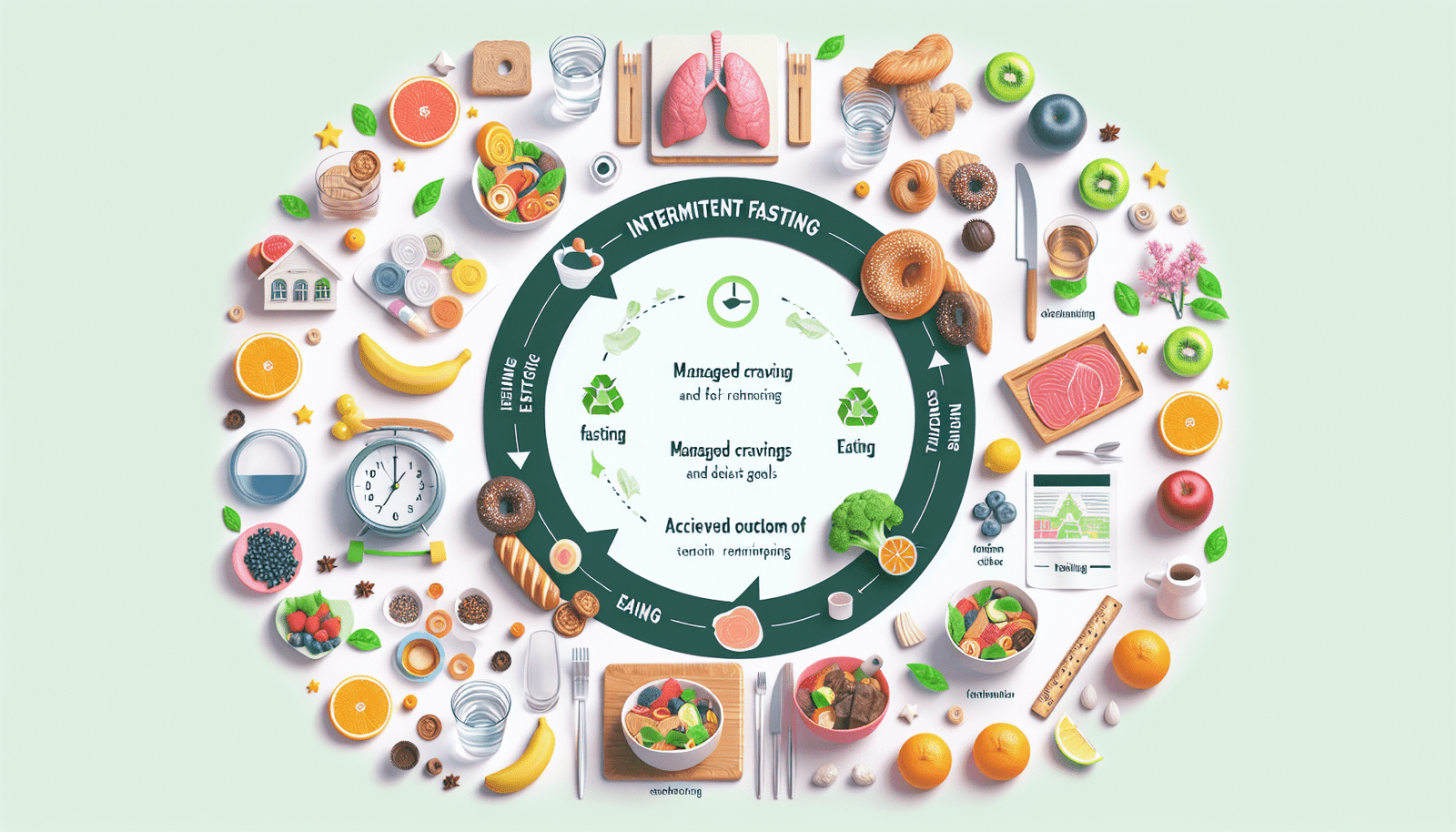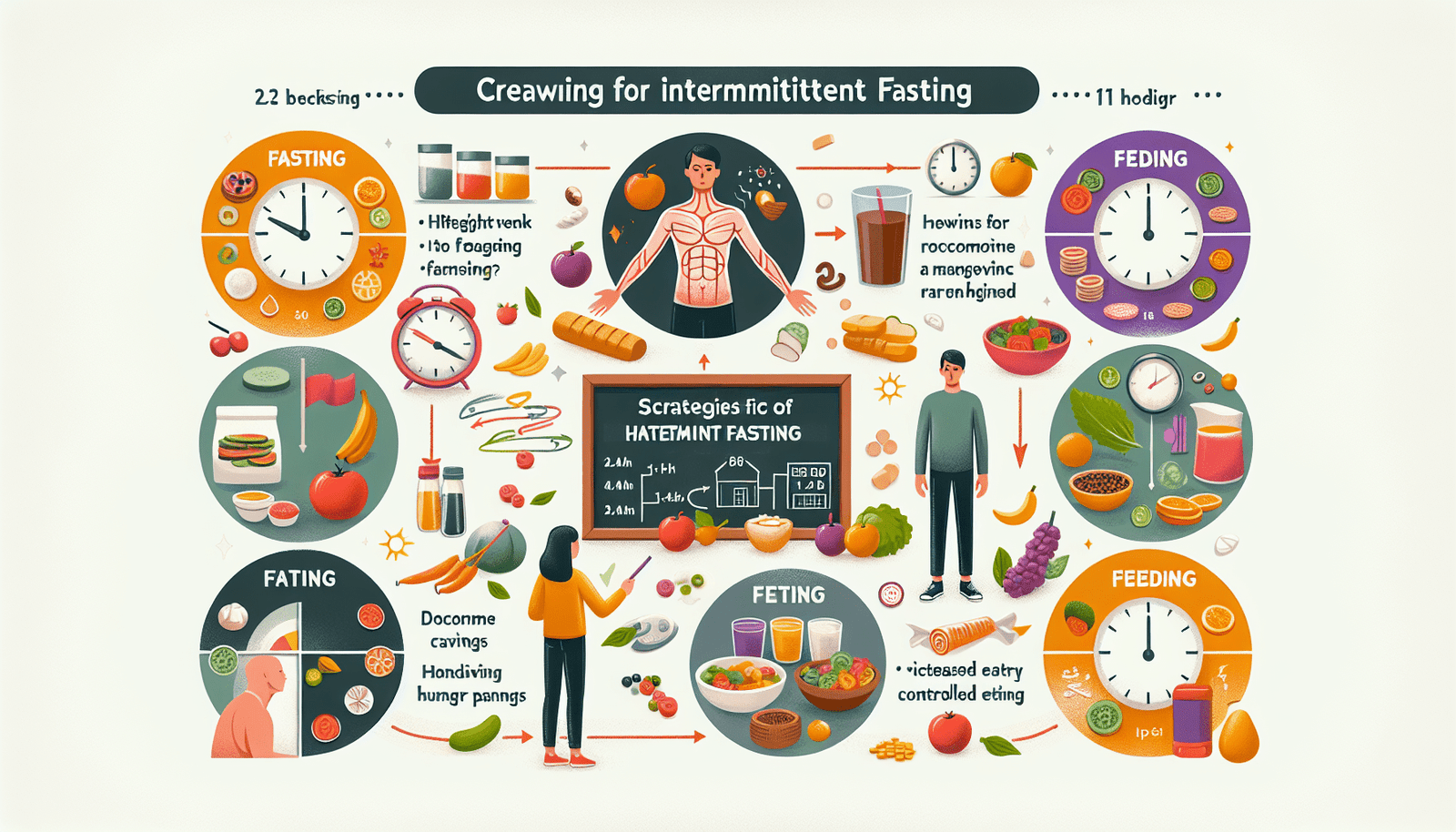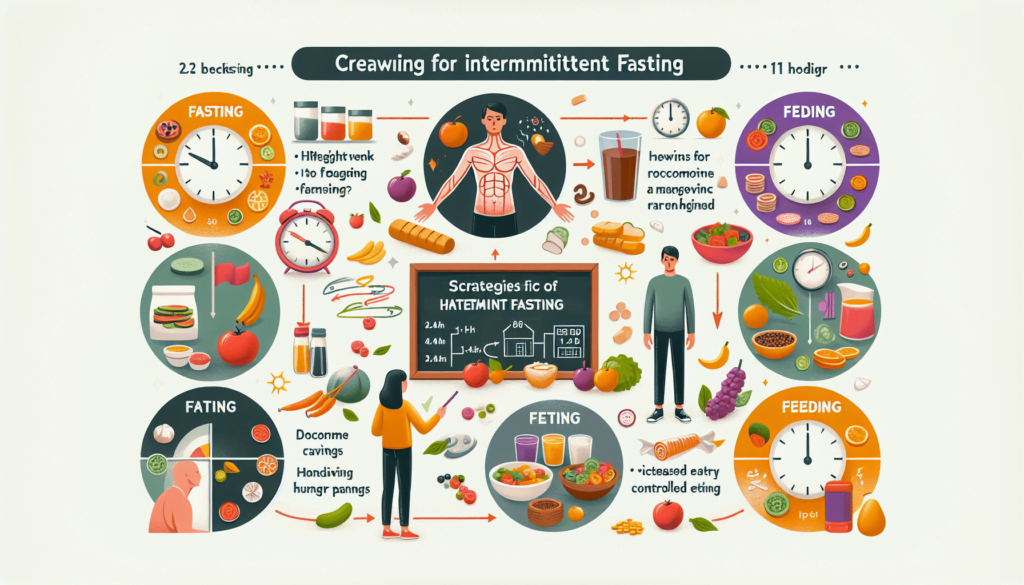Looking to control your cravings and manage your appetite? Look no further! In this article, we will explore the best intermittent fasting techniques that can help you achieve your goals. Whether you’re new to intermittent fasting or looking to enhance your current practices, we’ve got you covered. Say goodbye to those pesky cravings and hello to a healthier, more fulfilling lifestyle.

Understanding Intermittent Fasting
Intermittent fasting has become increasingly popular in the world of health and wellness. But what exactly is it? Well, intermittent fasting is an eating pattern that involves alternating periods of fasting and eating. It’s not so much about what you eat, but rather when you eat.
What is intermittent fasting?
Intermittent fasting is not a diet, but rather a way of eating. It’s about restricting the window of time during which you consume your meals. There are different ways to approach intermittent fasting, but the most common methods involve fasting for a certain number of hours each day or fasting for one or two days out of the week.
How does intermittent fasting work?
Intermittent fasting works by giving your body a break from digesting food and allowing it to tap into its fat stores for energy. When you fast, your insulin levels decrease and your body starts burning fat instead of glucose for fuel. This can lead to weight loss, improved metabolic health, and a number of other benefits.
Different types of intermittent fasting
There are several different ways to approach intermittent fasting. One popular method is called time-restricted feeding, which involves fasting for a certain number of hours each day and only eating during a specific window of time. Another method is alternate-day fasting, where you fast every other day and eat normally on non-fasting days. There is also periodic fasting, where you fast for extended periods of time, such as 24 or 48 hours, once or twice a week.
Benefits of intermittent fasting
Intermittent fasting has been linked to a number of health benefits. Some of these include weight loss, improved insulin sensitivity, reduced inflammation, increased longevity, and improved brain health. Additionally, intermittent fasting can be a sustainable and flexible approach to eating, making it easier for many people to stick to compared to traditional calorie-restricted diets.
Effects of Cravings and Appetite on Intermittent Fasting
When it comes to weight management, cravings and appetite play a crucial role. Controlling these factors during fasting can be challenging, but it is essential for achieving your fasting goals.
The role of cravings and appetite in weight management
Cravings and appetite are natural physiological responses that drive us to seek out and consume food. They can be influenced by various factors, including hormonal imbalances, stress, and environmental cues. Managing cravings and appetite is important for weight management, as excessive caloric intake can lead to weight gain.
Challenges of controlling cravings and appetite during fasting
One of the major challenges of intermittent fasting is dealing with cravings and appetite during the fasting period. When you’re not eating for extended periods of time, it’s natural for hunger to set in and for cravings to arise. This can make it difficult to stick to your fasting schedule and can lead to overeating during your eating window.
Impact of cravings and appetite on fasting results
If cravings and appetite are not managed properly during fasting, it can have a negative impact on your fasting results. Giving in to cravings and overeating during your eating window can lead to consuming excess calories, which can hinder your weight loss goals. Additionally, it can disrupt the hormonal and metabolic benefits that intermittent fasting provides.
1. Meal Timing Strategies
One way to control cravings and appetite during intermittent fasting is by implementing specific meal timing strategies.
Time-restricted feeding
Time-restricted feeding involves restricting your eating window to a certain number of hours each day. This method typically includes fasting for 16-20 hours and consuming all your meals within a 4-8 hour window. By condensing your eating into a shorter period of time, you may find it easier to control your cravings and appetite.
Alternate-day fasting
Alternate-day fasting is a more extreme form of intermittent fasting. It involves fasting every other day and eating normally on non-fasting days. While this method may be challenging for some, it can be effective for reducing overall caloric intake and promoting weight loss.
Periodic fasting
Periodic fasting refers to fasting for extended periods of time, such as 24 or 48 hours, once or twice a week. This method provides a more prolonged break from food and can be effective for promoting autophagy, a cellular cleansing process. However, it may be more difficult to stick to for some individuals.
2. Balanced Macronutrient Distribution
Another important factor in controlling cravings and appetite during intermittent fasting is the distribution of macronutrients in your meals.
Importance of macronutrient balance
Having a balanced macronutrient distribution is crucial for overall health and satiety. Including a combination of protein, carbohydrates, and healthy fats in your meals can help stabilize blood sugar levels, keep you feeling full, and reduce cravings.
Recommended macronutrient ratios
While the optimal macronutrient ratio may vary depending on individual needs and goals, a general recommendation is to consume a higher proportion of protein and healthy fats, while moderating carbohydrate intake. This can help promote satiety and prevent spikes and crashes in blood sugar levels.
Effect of macronutrients on satiety
Protein and healthy fats are particularly important for promoting feelings of fullness and satiety. They take longer to digest and can help regulate appetite hormones, such as ghrelin and leptin. On the other hand, consuming large amounts of refined carbohydrates and sugars can lead to rapid spikes in blood sugar levels, followed by crashes, which can leave you feeling hungry and craving more food.

3. Hydrating Properly
Staying properly hydrated is important for overall health, but it becomes even more crucial during fasting periods.
Importance of hydration during fasting
When you’re not consuming food, it’s easy to overlook the importance of staying hydrated. But staying properly hydrated is essential for maintaining optimal bodily functions, including digestion, metabolism, and appetite regulation.
Recommended water intake
Aim to drink at least 8 cups of water per day, or more if you’re physically active or live in a hot climate. During fasting periods, it’s important to increase your water intake to compensate for the lack of fluids you’re getting from food.
Benefits of herbal teas and infused water
To help keep you hydrated and add some flavor to your fasting routine, consider incorporating herbal teas and infused water. These can provide additional hydration, as well as beneficial compounds and antioxidants. Just be mindful to choose teas and infusions that are free from added sugars or artificial sweeteners.
4. Incorporating High-Fiber Foods
Fiber is an often overlooked but essential component of a healthy diet, especially when it comes to controlling cravings and appetite.
Role of fiber in controlling cravings
Fiber is not digestible by the body, so it adds bulk to your meals without contributing calories. This can help promote feelings of fullness and reduce cravings. Additionally, fiber slows down the absorption of sugar in the bloodstream, helping to stabilize blood sugar levels and prevent energy crashes.
Examples of high-fiber foods
Include plenty of fruits, vegetables, whole grains, legumes, and nuts and seeds in your meals to increase your fiber intake. These foods are not only rich in fiber but also provide a wide range of nutrients and phytochemicals that support overall health.
Easy ways to incorporate more fiber into meals
To incorporate more fiber into your meals, try adding vegetables to your smoothies, including whole grains in your salads or casseroles, and snacking on nuts and seeds. Gradually increase your fiber intake to allow your body time to adjust and prevent digestive discomfort.
5. Mindful Eating
Practicing mindful eating can be a powerful tool for controlling cravings and appetite during the eating window.
Practicing mindful eating during the eating window
During your eating window, make a conscious effort to pay attention to your food and eating experience. Slow down, savor each bite, and be fully present. This can help you become more in tune with your body’s hunger and satiety cues, allowing you to better control cravings and avoid overeating.
Mindful eating techniques
Some mindful eating techniques include using all your senses to fully experience your meal, chewing your food thoroughly, and taking breaks between bites. Additionally, try to avoid distractions, such as television or smartphones, during mealtimes to fully focus on your food.
Benefits of mindful eating for appetite control
By practicing mindful eating, you can develop a greater awareness of your body’s signals of hunger and fullness. This can help you distinguish between physical hunger and emotional hunger, making it easier to control cravings and prevent overeating.
6. Proper Meal Planning
Meal planning can be a valuable tool for controlling cravings and appetite during intermittent fasting.
Importance of meal planning during fasting
Having a well-thought-out meal plan can help you stay on track with your fasting goals. When you have pre-planned meals, you are less likely to give in to cravings and make impulsive food choices.
Creating well-balanced and satisfying meals
When meal planning during intermittent fasting, focus on creating meals that are balanced, nutritious, and satisfying. Include a variety of whole foods, such as lean proteins, fruits, vegetables, whole grains, and healthy fats.
Avoiding common triggers for cravings
When planning your meals, be mindful of common triggers that can lead to cravings and appetite dysregulation. These triggers often include processed and packaged foods high in sugar, refined carbohydrates, and unhealthy fats. Opt for whole, unprocessed foods whenever possible and steer clear of foods that are likely to cause cravings and blood sugar imbalances.
7. Managing Stress and Emotional Eating
Stress and emotional eating can have a significant impact on cravings and appetite. It’s important to address these factors to achieve success with intermittent fasting.
Impact of stress on cravings and appetite
Stress can trigger cravings and emotional eating, leading to increased caloric intake and potentially hindering your fasting goals. Additionally, stress can disrupt hormonal balance and contribute to weight gain.
Strategies for stress management
To manage stress, prioritize self-care activities such as exercise, meditation, deep breathing, and engaging in hobbies or activities that bring you joy. Find healthy ways to reduce stress and seek support from friends, family, or professionals if necessary.
Recognizing and dealing with emotional eating triggers
Emotional eating involves using food to cope with emotions rather than satisfying physical hunger. It’s important to become aware of your emotional eating triggers and find alternative ways to deal with emotions, such as journaling, talking to a trusted friend, or practicing relaxation techniques.
Conclusion
In conclusion, there are various techniques you can implement to control cravings and appetite during intermittent fasting. By following meal timing strategies, incorporating balanced macronutrient distribution, staying hydrated, including high-fiber foods, practicing mindful eating, planning meals ahead of time, and managing stress and emotional eating, you can empower yourself to achieve your fasting goals. Remember, intermittent fasting is a flexible and sustainable approach, so find what works best for you and enjoy the journey towards better health.








